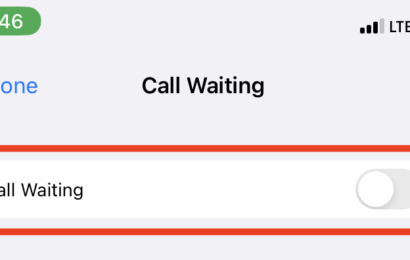Open Broadcaster Service (OBS) is a choice option for streamers and PC users keen on high-quality audiovisual recordings. Streamers who select OBS must leverage the best encoder settings to get the most out of every streaming session
OBS users can enforce streaming service encoder settings to get improved rendering across streams. Enforcing streaming service encoder settings keeps output bitrate at its highest level to support better image quality.
Making the most of this setting is possible with access to correct information. That’s why this article highlights the most relevant details about enforce streaming service encoder settings.
Taking cues from this guide makes rendering high-quality images across streams easier to manage.
What Does Enforce Streaming Service Encoder Settings Mean?
Checking the enforce streaming service encoder on OBS sets a maximum threshold for each stream’s bitrate. It also sets a suitable key-frame interval for streamers based on each streaming service recommendations.
The enforce streaming service encoder settings checkbox is useful for streamers who render live streams across different platforms.
What Encoder Settings Should I Use for OBS?
OBS users with an NVIDIA graphics card will get the best experience using an NVENC encoder. NVENC encoders are available in OBS version 24 and later.
Streamers running NVENC encoders gain access to minimal impact on system resources while rendering high-resolution frames. NVENC encoder also support low bitrates during rendering for better stream quality.
Streamers with an NVIDIA graphics card that supports the latest ASIC chip technology cam get even more rendering quality across streams.
How to Select Encoder Settings for OBS
Step 1: Open OBS
First, open OBS on your system after installing it. If you’ve installed OBS for long, consider searching for new updates or reinstalling the app from source.
Step 2: Go to Settings
Next, click File and then Settings or access the menu directly from your preview screen’s bottom-right corner.
Step 3: Click Output
Select Output from all setting available.
Step 4: Switch from Simple to Advanced encoder mode
Change the encoder mode from Simple to Advanced to make several preset functions visible.
Step 5: Select preferred encoder presets
Next, choose the preferred encoder preset best suited to your streams.
How to Turn Encoder Settings for OBS On and Off
Step 1: Open OBS
First, launch the OBS app on your Windows, macOS, or Linux device. Make sure your app is updated to the latest version before proceeding to switch encoder settings.
Step 2: Go to Settings
Next, click on File > Settings to access the Settings menu.

You can access the settings menu from your screen’s bottom-right corner too.
Step 3: Click Output
After accessing the Settings menu, click on Output to access encoder settings.

Step 4: Change Output Mode to Advanced
Switch the encoder settings mode to Advanced to access several presets.

Step 5: Change CPU Usage Preset to placebo (to turn off) and veryfast (to turn on)
Next, change the CPU usage preset on your encoder settings to placebo to render it ineffective. You can also switch the usage preset from veryfast – ultrafast to increase encoder performance across your streams.

What is the Best Rate Control for Streaming Service on OBS?
The best rate control on OBS differs according to your preferred streaming service. While CBR is the default rate control setting, other streamers could prefer VBR, CRF, or ABR in that order.
System resources and the demanding nature of your streams could produce different results across rate control settings.
Besides tweaking the rate control, streamers must consider the bitrate per pixel rate of their respective streams for great results.
The best bitrate for streaming with OBS is around 6Kbps per pixel for mid-range streams. So, if you plan to stream a 720p video, your bitrate should be about 6Kbps X 720 = 4320Kbps.
However, high-resolution streams (1080p) could require within 6 – 15Kbps based on your preferred streaming service and other factors. Generally, recording or streaming at 30FPS uses requires fewer bitrates than at 60FPS.
How to Enforce Streaming Service Encoder Settings to Stop Output Lag
Step 1: Open OBS
Launch the OBS app installed on your computer. Next, click Settings from the File menu or bottom-right corner of OBS home screen.
Step 2: Click Stream and select any preferred streaming service
Next, click on Stream and connect to Twitch, YouTube, or any other streaming service you prefer.
Step 3: Click Output
In the Output tab, switch your preferred mode to Advanced to reveal several essential options.
Step 4: Switch rate control to preferred option
Four rate control options (CBR, VBR, CRF, and ABR) are available. Select any of the rate control options you prefer to run your streams and save.
Step 5: Check ‘Enforce streaming service encoder settings’
Next, check the box with the description ‘Enforce streaming service encoder settings’ and save your settings.





